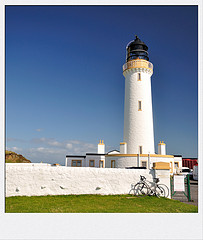 Mainframe outsourcing has been growing in popularity in recent years, and it’s been the subject of much discussion. If you’re considering a move in this direction, naturally you want to know what costs are associated with mainframe outsourcing.
Mainframe outsourcing has been growing in popularity in recent years, and it’s been the subject of much discussion. If you’re considering a move in this direction, naturally you want to know what costs are associated with mainframe outsourcing.
It’s crucial to consider – as in carefully evaluate – all costs that derive from your mainframe operations, not just the obvious ones. You have to look at direct and indirect costs, tangible and intangible factors that can affect outcomes whether you choose mainframe outsourcing or take a different route. In the end, total cost of ownership is the only cost that matters.
We’re going for comprehensive visibility here. You have to account for everything. So what might those costs be?
Direct, tangible costs.
These are your actual, out-of-pocket expenses for purchases and upgrades, maintenance, support, salaries, etc. – everything associated with platforms, applications and specific services you’re providing to each of your business units. This is the easiest part of your cost analysis, because your IT and overall budgets clearly show these numbers.
Indirect costs.
You’ll also want to tote up labor costs such as taxes and benefits, which can be significant but are surprisingly easy to overlook. Include depreciation and amortization, IT costs allocated to non-IT departments or “corporate,” including human resources, accounting, office space and overhead, facilities operations and management. Think about any relevant tax considerations.
Intangibles.
Some costs of doing business don’t appear on your P&L or balance sheet. Compliance issues, for instance – the cost of failure to meet requirements. Whether employees are ready for total transformation or handle change better if it happens incrementally. Any enterprise-specific or marketplace issues.
You want to establish a baseline to accurately compare options and costs of various alternatives. If your data is skewed or disparate, your “results” could point toward a very wrong direction, wasting time and money and forcing you to regroup. You may not even know for sure where you went wrong. That’s a cost you want to avoid.
Even though you can’t quantify everything, you can come close. And you’ll have your intangibles top-of-mind. That’s the only way you’ll be able to strategically measure the impact of each option, to make an accurate business case.
Approach your assessment systematically.
Not sure exactly what to measure? This is a great opportunity to enlist the assistance of a professional IT management consulting team. They’re equipped with hands-on experience in shoes like yours as well as in-depth understanding of current and emerging technologies.
They’ll help shoulder the burden of assembling your data, so your team remains focused on core tasks. They’ll ensure you’re uncovering every hidden cost related to mainframe infrastructure, maintenance, application development, etc. They’ll help analyze your data, establish your business case and evaluate potential vendors and services, so you can make the most strategic and cost-effective choices about mainframe outsourcing.
Remember that cost projections aren’t a static snapshot-in-time. Realistic TCO requires plotting costs over the entire projected contract life. That way you can contemplate how anticipated business changes might affect platform changes, new or retiring applications, expected volume changes, staffing, etc.
Now you have the cost information you need to make the best decision.
You want to map it all out now because if you choose mainframe outsourcing, you’ll want to be sure your contractual agreement identifies key performance indicators and spells out which metrics will be used to evaluate progress. And you’ll want to ensure you’re paying only for work actually performed on your behalf. Your IT management consultants can be especially valuable here, helping you navigate the sometimes-choppy waters of negotiating outsourcing contracts.
Photo credit: Paul Stevenson via Flickr

